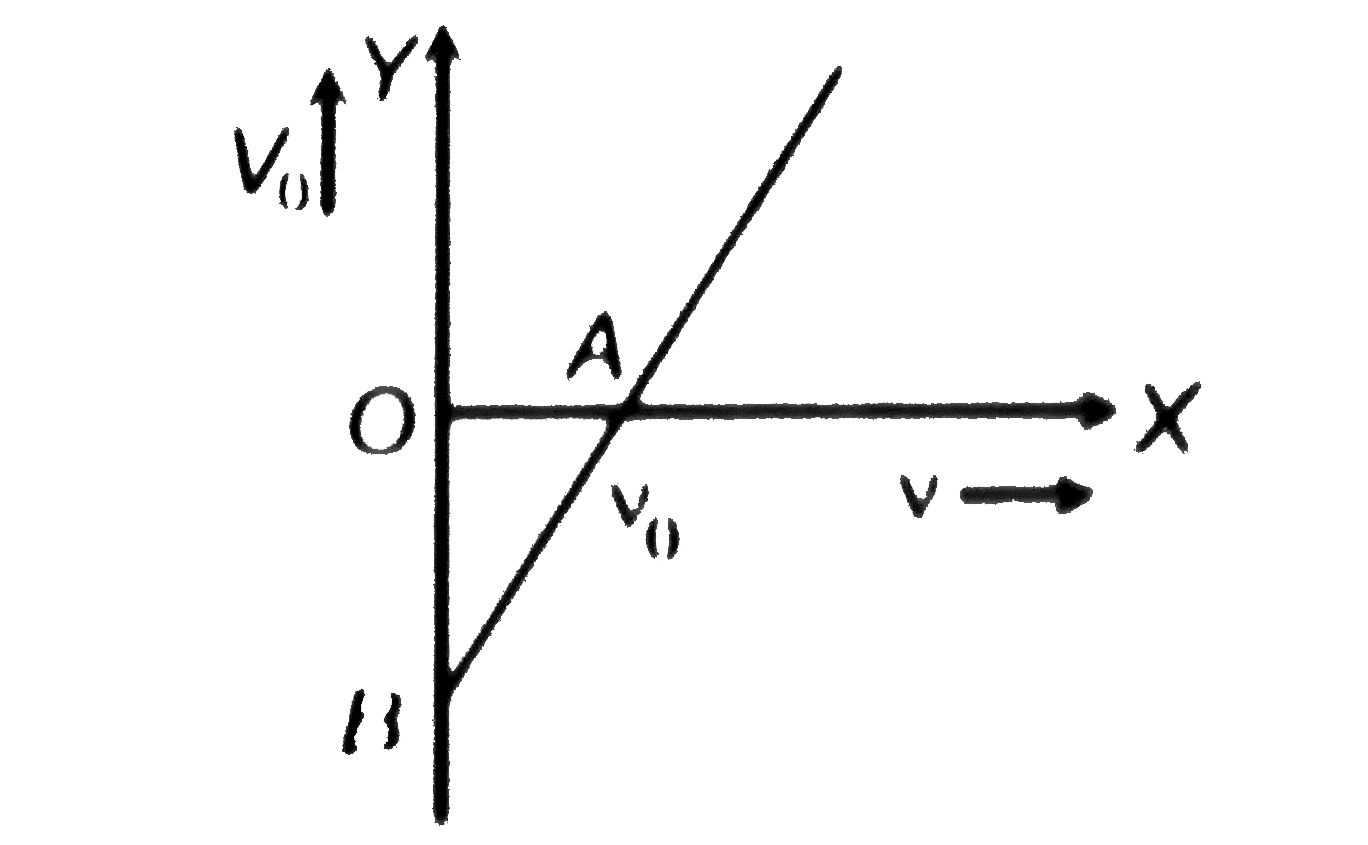
A student performs an experiment on photoelectric effect,using two materials A and B.A plot Vstopvs v is given in figure.
(i)Which material A or B has a higher work function?
(ii)Given the electric charge of an electron=1.6×10−19C,find the value of the h obtained from the experiment for both A and B.Comment on whether it is consistent with Einstein's theory:Solution in Gujrati
(i)Work function ,ϕ0=hf0
(where f0=threshold frequency)
∴ϕ0∝f0 ……..(1)
From the figure ,
f0A=5×1014Hz
f0B=10×1014Hz
⇒f0B>f0A
⇒ From relation(1),
ϕ0B>ϕ0A
(ii)We know that slope of graph of |V0∣→f
Gives us value of (he).Hence
Slope of graph for A,
tanθ1=PQQR
∴he=25×1014=0.4×10−14
∴h=0.4×10−14×e
∴h=0.4×10−14×1.6×10−19
∴h=6.4×10−34Js .......(2)
Slope of graph for B,
tanθ2=STQT
∴he=2.55×1014=0.5×1014
∴h=0.5×10−14×e
=0.5×10−14×1.6×1019
h=8×10−34Js ..........(3)
Thus ,here value of h are obtained different from the graphs for A and B.Hence ,above experimental observations are not consistent with Einstein.s theory.
Topper's Solved these Questions
- BOOK - KUMAR PRAKASHANCHAPTER - DUAL NATURE OF RADIATION AND MATTEREXERCISE - Section-D (multiple choice questions (MCQs)48videos
DUAL NATURE OF RADIATION AND MATTER
- BOOK - KUMAR PRAKASHANCHAPTER - DUAL NATURE OF RADIATION AND MATTEREXERCISE - Section-D (multiple choice questions (MCQs) (photo-electric effect)1videos
DUAL NATURE OF RADIATION AND MATTER
- BOOK - KUMAR PRAKASHANCHAPTER - DUAL NATURE OF RADIATION AND MATTEREXERCISE - Section-C (Very short answer type questions)11videos
DUAL NATURE OF RADIATION AND MATTER
- BOOK - KUMAR PRAKASHANCHAPTER - CURRENT ELECTRICITYEXERCISE - SECTION [D] MULTIPLE CHOICE QUESTIONS (MCQs) (MCQs ASKED IN BOARD EXAM AND GUJCET)23videos
CURRENT ELECTRICITY
- BOOK - KUMAR PRAKASHANCHAPTER - ELECTRIC CHARGES AND FIELDS EXERCISE - SECTION D MCQS ASKED IN COMPETITIVE EXAMES (MCQS AKSED IN BOARD EXAM AND GUJCET)14videos
ELECTRIC CHARGES AND FIELDS
Similar Questions
Scientist ……..invented electron.
View SolutionScientist……..performed experiment related to photo-electric effect.
01:46View SolutionA proton and an α=particle are accelerated using the same potential difference.How are the de-Broglie wavelengths λp and λa related to each other?
01:36View SolutionA wire is bent in the form of circle of radius 2m. Resistance per unit length of wire is 1πΩm. Battery of 6 V is connected between A and B ∠AOB=90∘ . Find the current through the battery.
 06:26View Solution
06:26View SolutionWhen air is replaced by dielectric medium of constant K, the maximum force of attraction between two charges separated by distance d, ..........
06:13View SolutionFigure is the plot of the stopping potential versus the frequency of the light used in an experiment on photoelectric effect. Find (a) the ratio h/e and (b) the work function.
 02:43View Solution
02:43View SolutionFigure shows the plot of the stopping potential versus the frequency of the light used in an experiment on photoelectric effect. The ratio (h)/(e) is
01:36View SolutionIn an experiment on photoelectric effect the frequency f of the incident light is plotted against the stopping potential V_(0) . The work function of the metal is given by ( e is the electronic charge)
09:09View SolutionA student performs an experiment on photoelectric effect, using two materials A and B. A plot of Vs⊤vs.ν is given in fig.
(i) Which material A or B has a higher work function?
(ii) Given the electric charge of an electron =1.6×10−19C, find the value of h obtained from the experiment for both A and B. Comment on whether it is consistant with Eistein's theory.
 03:26View Solution
03:26View SolutionA student performs an experiment on photoelectric effect using two materials A and B. A plot of stopping potential (V_(0)) vs freqency (v) is as shown in the figure. The value of obtained from the experiment for both A and B respectively is (Given electric charge of an electron =1.6xx10^(-19)C)
02:34View SolutionThe stopping potential V_(0) (in volt) as a function of frequency (v) for a sodium emitter, is shown in the figure. The work function of sodium, from the data plotted in the figure, will be: (Given : Planck’s constant) (h) = 6.63 xx10^(-34)Js" electron charge "e=1.6xx10^(-19)C )
04:57View SolutionIn an experiment on photoelectric effect the frequency f of the incident light is plotted against the stopping potential V0. The work function of the photoelectric surface si given by ( e is the electronic charge)
 05:54View Solution
05:54View SolutionA student performs an experiment on photoelectric effect, using two materials A and B. A plot of V_(stop) vs nu is given in fig. (i) Which material A or B has a higher work function? (ii) Given the electric charge of an electron =1.6xx10^(-19)C , find the value of h obtained from the experiment for both A and B. Comment on whether it is consistent with Einstein's theory.
04:00View SolutionFigure is the plot of the stopping potential versus the frequency of the light used in an experiment on photoelectric effect. Find (a) the ratio h/e and (b) the work function.
 04:08View Solution
04:08View Solution
the stopping potential Vo (in volt) as a function of frequency (v) for a soidum emitter, is shown in the figure. The work function of sodium from the data plotted in the figure. Will be:
[ given plank's constant (h)=6.63×10−34Js, electron charge e=1.6×10−19C)03:16View Solution
